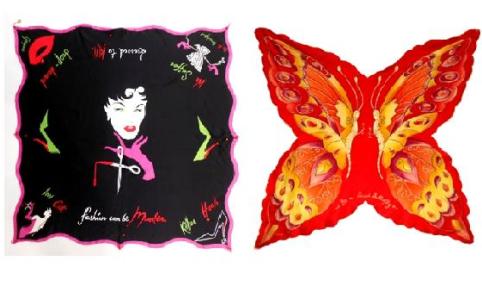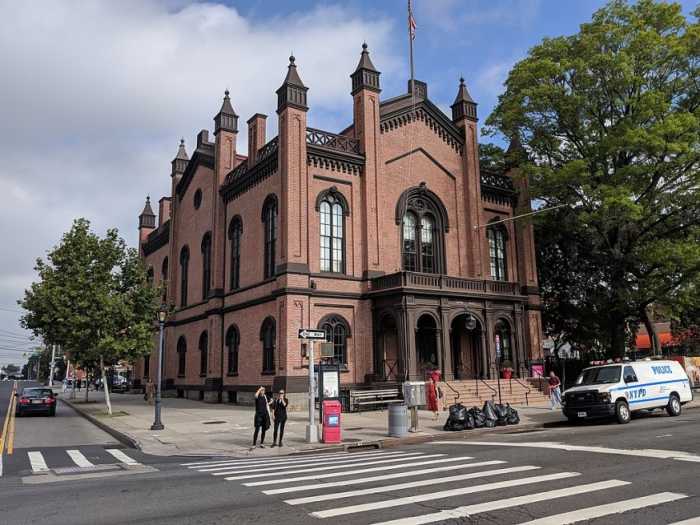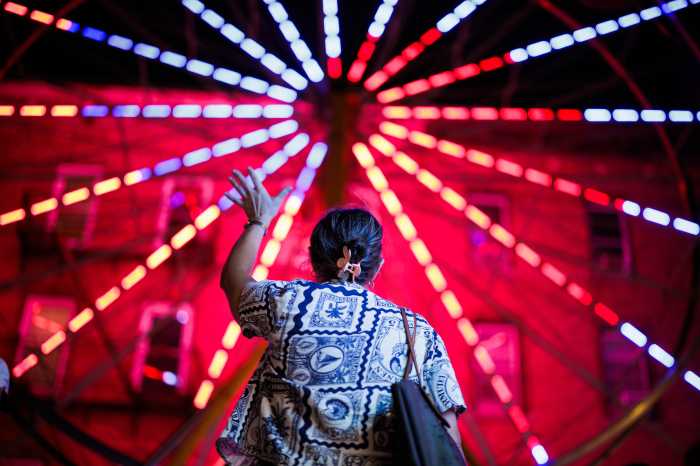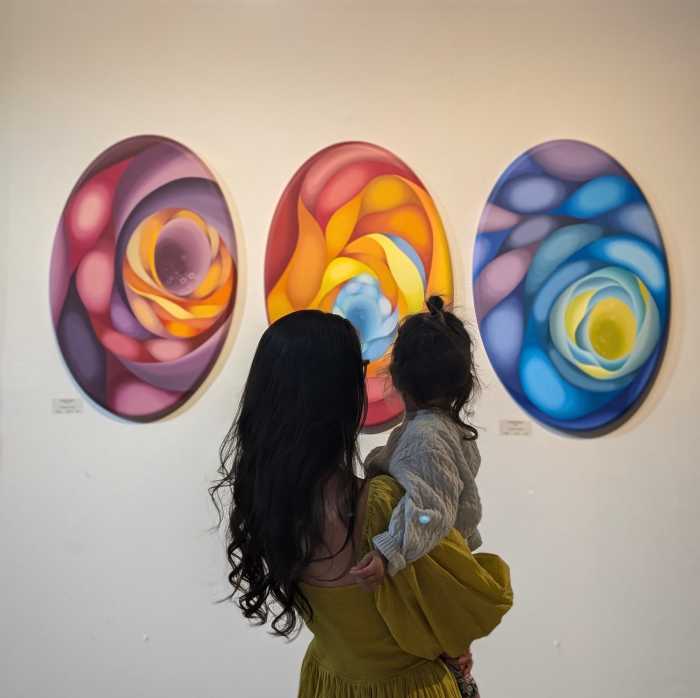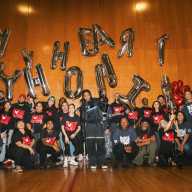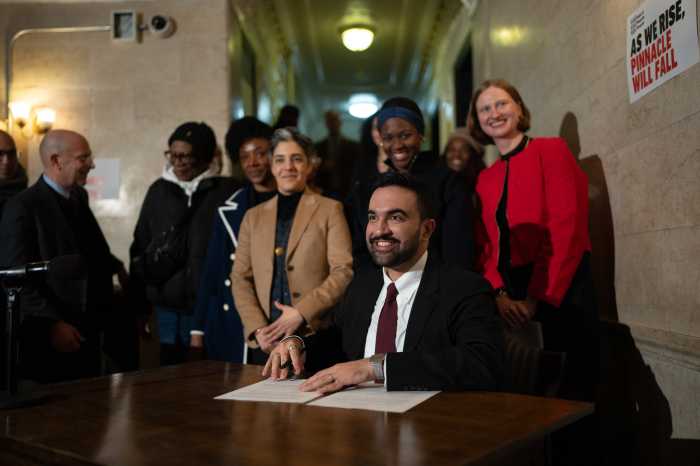ALAN CAPPER
“I have three great passions in my life,” says Rachel Rowberry as she sits at her desk working on a new design. “The first is our daughter Freya, the second is extending art into scarf design, and the third is opera.” Sometimes she can bring two of the three together.
Rowberry is a fabric designer and creative director of Collection 18, one of New York’s leading accessories companies. Her scarf designs are high-end and she has created for Harrods, Henry Bendel, Anne Klein, Ellen Tracy and Lulu Guinness, among others.
“A scarf is a blank canvas to me and almost unique in its ability to carry a complete design, and within the 36×36 inch square I can create designs of great detail and beauty,” she said.
All her scarves must be perfectly printed on the highest quality silk with hand rolled edges that further enhance the quality of the art.
She was born in Cornwall, England, the most westerly county in England. She believes that the dramatic landscape, with its cliffs and thundering surf, taught her the value of the drama that she brings into her work.
It was not an easy early start to her life being raised in a children’s home, but she showed an early passion and aptitude for art, winning a scholarship and graduating with honors in textile design from the prestigious Winchester School of Art.
After her graduation show she was hired immediately by David Hicks, a cousin to the Queen, and the chair of one of the top design firms in London. It was a fortunate break for her because one of the first clients she worked with was Harrods. This helped to extend her range, and to understand how demanding up-market clients can be. After two years working in London she felt a strong desire to take her talent to New York.
“I saw the city as a great creative magnet for me, and I just wanted to extend my boundaries, take my chances and see how far I could go,” she remembers.
With a limited amount of money she arrived in New York and found a small midtown hotel that welcomed artists. She designed two rooms for the hotel, the Carlton Arms, and after 20 years remains close friends with the management.
Almost immediately she was hired by Ellen Tracy as the scarf designer.
“It was a terrific experience, and taught me a great deal about trends in the U.S. retail market, but more importantly it underlined the fact that New York was now home and I felt more settled than at any other time in my life.”
After a period of working as an independent she joined Collection 18 as a designer and studio manager, eventually becoming creative director.
It was at this time that she began to consider putting together two of her great passions, opera and scarf design.
She had been seduced by the power and beauty of opera while living in London, loved the neo-classicism of Mozart, the lush romanticism of Puccini. But her heart and mind had been seized by the sweeping dramas of the operas of Richard Wagner.
Although they are often regarded as complex and controversial, it was here that she decided to start her collection. She could not have found a more difficult choice than selecting the “Ring Cycle,” four operas using the stories of the Nordic gods and their themes of redemption through love.
It took many weeks to complete, but finally it was done with a centerpiece of Wotan’s farewell to Brunnhilde, one of the most dramatic scenes in the entire cycle, surrounded by scenes from all four of the operas that make up the cycle: “Das Rheingold,” “Die Walkure,” “Siegfried” and “Gotterdammerung.”
Immediate success was achieved with the launch of the scarf. The influential Wagner Society of New York purchased several hundred, as did the Met, Washington National Opera and the Seattle Opera. Wagner admirers around the world made their individual purchases, and in this bi-centenary year of Wagner’s birth the scarf is still very much in demand.
Her next choice was Puccini’s “Turandot,” a lush version of the great Romantic Opera which was immediately purchased by the Metropolitan Opera store.
In the future she will develop scarves based on “Aida,” “The Magic Flute,” “Madama Butterfly,” “Carmen,” “Lohengrin” and “Orpheus and Eurydice.”
“I love living in Long Island City, with my partner and our daughter Freya (named after a character in the Ring Cycle),” said Rowberry. “The great views of Manhattan, and its closeness, the river and the people are all very sustaining for me, and to be in the center of a thriving arts community, and a major arts center encourages me with my own creativity.”
Scarf designer Rachel Rowberry in LIC
RECOMMENDED STORIES

